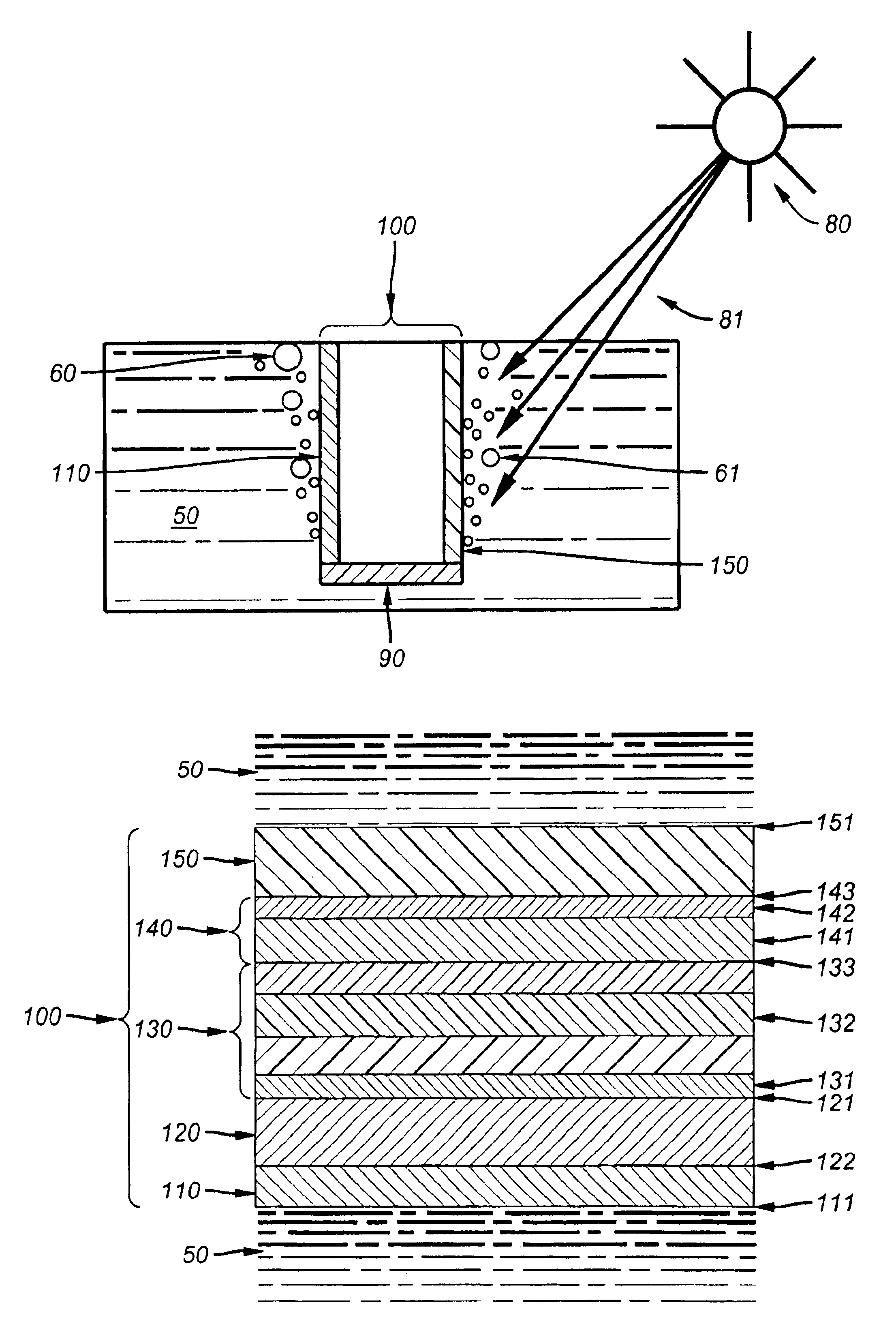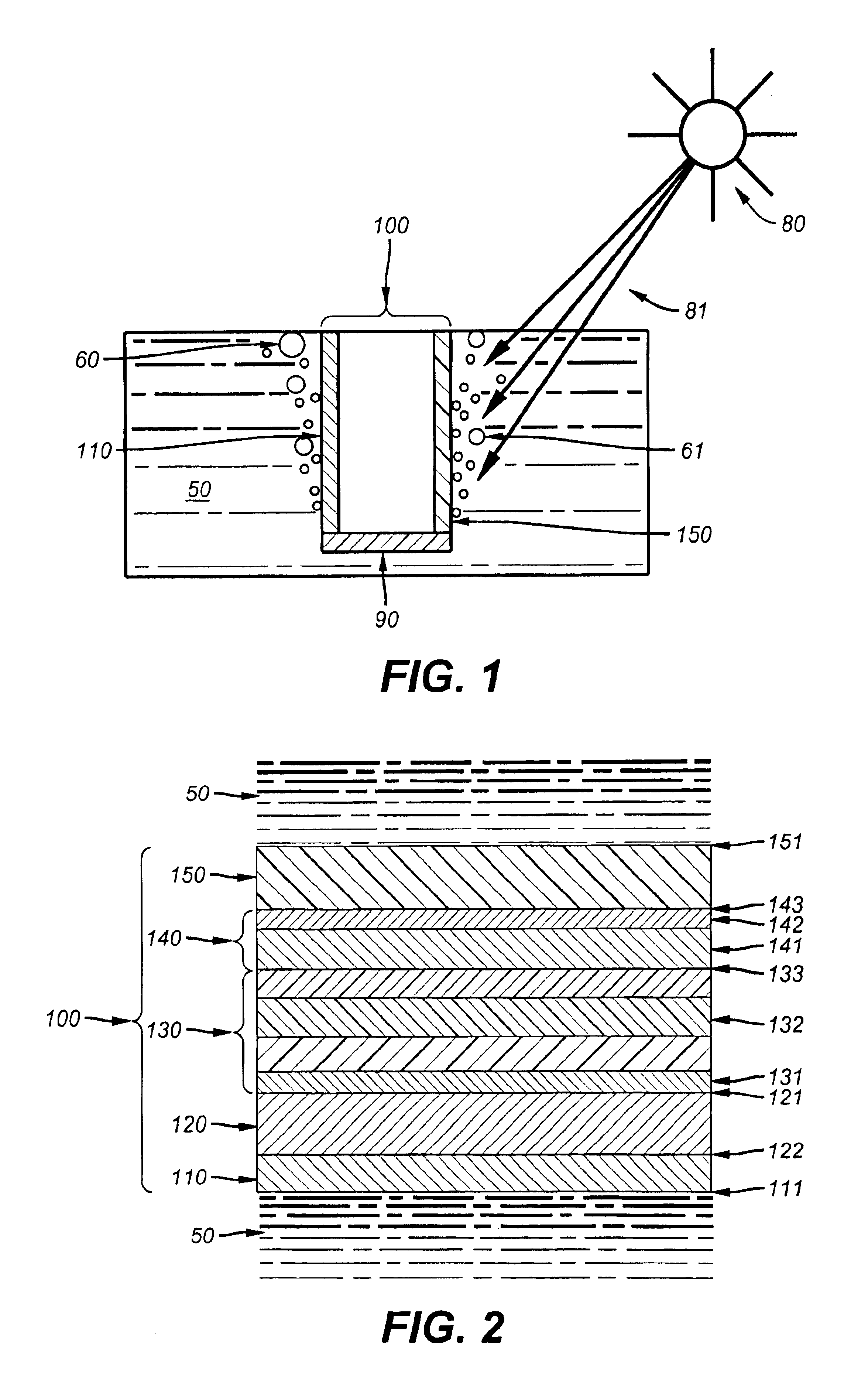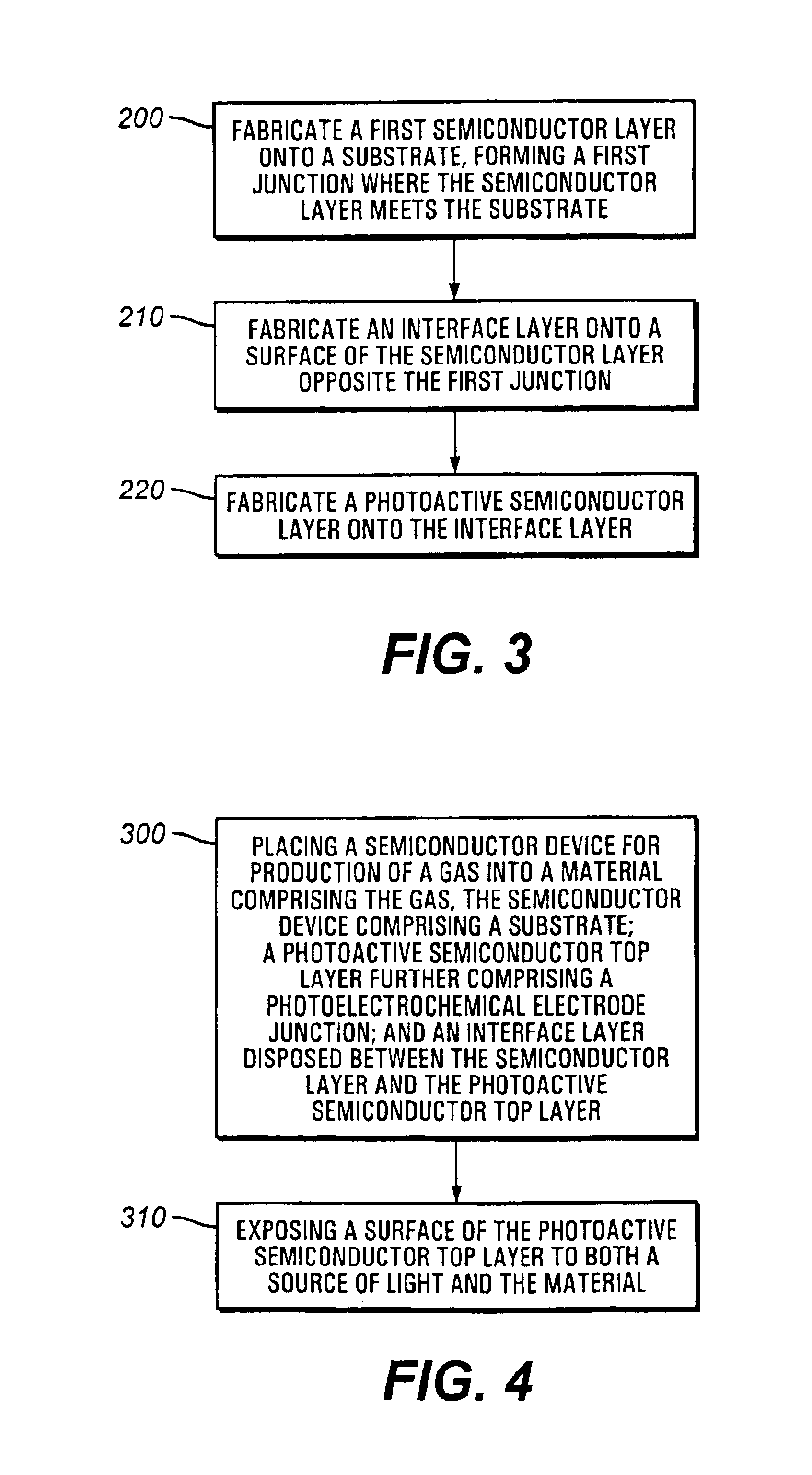Hybrid solid state/electrochemical photoelectrode for hydrogen production
a photoelectrode and solid-state technology, applied in the direction of energy input, sustainable manufacturing/processing, final product manufacturing, etc., can solve the problems of reduced corrosion protection at the oer catalyst layer, high optical loss of devices, and loss of catalytic activity
- Summary
- Abstract
- Description
- Claims
- Application Information
AI Technical Summary
Benefits of technology
Problems solved by technology
Method used
Image
Examples
Embodiment Construction
[0011]Referring now to FIG. 1, semiconductor device 100 is adapted to produce one or more gases 60 upon exposure to light 81, for example sunlight, when semiconductor device 100 is at least partially suspended in material 50 containing the constituent materials of gas 60. It is understood that, as used herein, “gas 60” may comprise a single gas, e.g. gas 60a, or a plurality of gases, e.g. gas 60a and / or gas 60b. Encapsulation film 90 may be deposited to protect one or more edges of semiconductor device 100 while semiconductor device 100 is suspended in material 50.
[0012]Referring now to FIG. 2, semiconductor device 100 comprises substrate 120, semiconductor layer 130 disposed on first surface 121 of substrate 120, photoactive semiconductor top layer 150, and interface layer 140 disposed between semiconductor layer 130 and photoactive semiconductor top layer 150. Photoactive semiconductor top layer 150 further comprises photoelectrochemical electrode junction 151 disposed at a surfac...
PUM
| Property | Measurement | Unit |
|---|---|---|
| wavelengths | aaaaa | aaaaa |
| wavelengths | aaaaa | aaaaa |
| semiconductor | aaaaa | aaaaa |
Abstract
Description
Claims
Application Information
 Login to View More
Login to View More - R&D
- Intellectual Property
- Life Sciences
- Materials
- Tech Scout
- Unparalleled Data Quality
- Higher Quality Content
- 60% Fewer Hallucinations
Browse by: Latest US Patents, China's latest patents, Technical Efficacy Thesaurus, Application Domain, Technology Topic, Popular Technical Reports.
© 2025 PatSnap. All rights reserved.Legal|Privacy policy|Modern Slavery Act Transparency Statement|Sitemap|About US| Contact US: help@patsnap.com



